The Flow Editor (Magic xpi 4.9)
You create a flow by inserting flows into the Flow Editor. The Flow Editor has Trigger and Flow areas. Components that trigger a flow automatically are placed in the Trigger area. Components that are part of the flow are placed in the main flow area. The flow is executed in the order that you place the components. However, you can move a branch of components to change the branch order.
In addition, you can create flow logic, which sets conditions and rules for the execution of the flow.
You can change the order of flows in the Solution Explorer by right-clicking on the flow and selecting Move Flow Up or Move Flow Down.
The following table shows the various display items that you may see in the Flow Editor:
|
|
|
|

|
Indicates that a step’s Wait for Completion parameter is set to Yes.
|
|

|
A red wheel symbol in the top right corner of a component icon indicates that the component has not been configured.
|
|

|
Processing mode:
-
A solid line indicates a linear connection between steps.
-
A dotted line indicates a parallel connection between steps.
-
A broken line indicates a stand-alone connection between steps.
|
|

|
When marking a flow as auto start, the Auto Start icon will appear to the left of the Trigger area.
|
|

|
When marking a flow as auto repeat, the Auto Repeat icon will appear to the left of the Trigger area.
|
|

|
When a step has a breakpoint defined, a red dot will appear in the top left corner of the icon.
|
|

|
When a step is defined as suspended, it will appear gray.
|
|

|
The GoTo arrow indicates that this step is actually a pointer to another step in the flow. This is a simple way to reuse code that already exists in the flow.
When you select the component that goes to another component, Magic xpi displays a dashed line pointing to the component to be executed next.
|
The following table describes the elements in the Flow Editor.
|
|
|
|
Instances/Steps
|
-
You can drag one or more components from the Toolbox pane into a flow. Each component represents an instance or step in a flow.
-
You can press Ctrl+F or go to the Edit menu and select Find, followed by Find Reference, to open the Find Reference Results dialog box. You can use this functionality to find the first step that contains the search string.
-
You can press Ctrl+Shift+F to go to the Edit menu and select Find, followed by Find Text, to open the Find Text dialog box. You can use this functionality to find the first step that contains the search string.
|
|
Processing Mode
|
-
A flow can only execute one linear path, or branch, at a time. You can determine this path using flow logic.
-
A flow can have several parallel steps in each level of the flow.
|
|
Collapse/Expand Branches
|
-
If you have created long flows in the Flow Editor, you can collapse and expand the various branches. This allows you to see more of the flow without scrolling down.
-
To collapse a branch, you should right-click on the first step of the branch that you want to collapse, and select Collapse from the context menu.
-
If you want to reverse this, you should right-click on the step, and select Expand or Expand All from the context menu. The  icon under the step indicates that the branch can be expanded. You can also click on this icon to expand the step. icon under the step indicates that the branch can be expanded. You can also click on this icon to expand the step.
-
When you collapse a branch, all steps and branches under the selected step are collapsed.
-
The state of the last collapsed or expanded steps are saved in an external file outside the project. When you open a project, the previous state of the branches is restored using the data that was saved to the file.
|
|
Flow Logic
|
|

